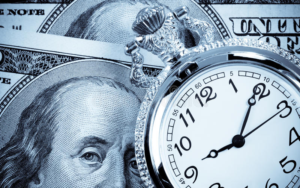
Saving money is often touted as the key to financial stability and long-term wealth creation. While it’s true that cultivating a healthy savings habit is crucial for personal financial success, there is a lesser-known economic concept that suggests too much saving could be detrimental to economic growth. This phenomenon, known as the Paradox of Thrift, was first introduced by renowned economist John Maynard Keynes.
Understanding the Paradox of Thrift
The Paradox of Thrift is a concept that challenges the conventional wisdom of saving as an inherently positive practice. To fully grasp this paradox, it’s essential to recognize the role of spending in driving economic growth and to examine the potential consequences of excessive saving on the macroeconomic level.
Origin and Explanation of the Paradox of Thrift
The Paradox of Thrift was first introduced by British economist John Maynard Keynes in his groundbreaking 1936 book, “The General Theory of Employment, Interest, and Money.” Keynes argued that while saving is beneficial for individuals, if everyone increases their savings simultaneously, it could lead to detrimental effects on the economy.
The paradox lies in the assumption that increased saving leads to decreased consumption. As individuals save more, they spend less, which causes a reduction in the aggregate demand for goods and services. This reduction in demand can lead to lower production levels, decreased business revenue, and potential layoffs. Ultimately, the combination of these factors results in slower economic growth.
The Importance of Spending in the Economy
To understand the Paradox of Thrift, it’s crucial to recognize the role of consumer spending in driving economic growth. In most economies, consumer spending accounts for the largest portion of Gross Domestic Product (GDP), which measures the total value of goods and services produced within a country. In the United States, for example, consumer spending constitutes around 70% of GDP.
Apart from consumer spending, the other main components of GDP are business investment, government spending, and net exports. While these components contribute significantly to economic growth, consumer spending remains the primary engine that drives an economy’s expansion.
When consumers cut back on spending, businesses experience reduced revenue and are often forced to reduce production levels, lower wages, or lay off workers. In turn, these actions decrease the purchasing power of individuals, leading to a vicious cycle of reduced spending and stagnating economic growth.
The Paradox of Thrift demonstrates that there is a delicate balance between saving and spending in an economy. While saving is essential for individual financial stability and the accumulation of capital, excessive saving can potentially result in economic stagnation. In the next sections, we will explore the factors that contribute to the Paradox of Thrift, its potential short-term and long-term effects, and how government and central banks can address this complex issue.

How Increased Saving Can Hurt the Economy
As we’ve explored in the previous section, the Paradox of Thrift highlights the potential negative consequences of excessive saving on the economy.
Short-term Effects of Increased Saving
As individuals save more and spend less, the demand for goods and services declines. This drop in demand can cause businesses to experience lower revenues, which may force them to adjust their operations to accommodate the new market conditions.
As consumer spending falls, businesses are faced with reduced income streams, which can impact their ability to invest in new projects, expand their workforce, or maintain current levels of production.
With decreased demand and lower revenues, businesses may need to cut production levels, leading to reduced employment opportunities. In some cases, companies may even resort to layoffs, further exacerbating the negative impact on the economy.
Long-term Effects of Increased Saving
When reduced consumer spending becomes a long-term trend, it can lead to a sustained period of slower economic growth. This slowdown affects not only businesses and workers but also the government, as it results in lower tax revenues and limits the resources available for public services and infrastructure investment.
As businesses struggle to adapt to the decline in demand, they may be forced to lay off workers or halt new hiring. This trend can result in prolonged periods of high unemployment, leading to a reduction in consumer spending power and further feeding into the cycle of economic stagnation.
A sustained period of economic stagnation can lead to a decline in consumer confidence, as individuals become more uncertain about their financial prospects. This lack of confidence can prompt even more saving and less spending, making it difficult for the economy to recover and regain its momentum.
The Paradox of Thrift illustrates that while saving is an essential aspect of personal finance, an excessive focus on saving at the expense of spending can be detrimental to the health of the economy. Striking a balance between saving and spending is crucial for both individuals and the broader economy to thrive. In the following sections, we will discuss the factors that contribute to the Paradox of Thrift and how government and central banks can mitigate its impact.

Factors That Contribute to the Paradox of Thrift
Understanding the factors that contribute to the Paradox of Thrift can help policymakers and individuals make more informed decisions to promote a healthy balance between saving and spending.
Economic Uncertainty
During periods of economic uncertainty or recession, individuals tend to become more cautious with their spending and increase their savings. This behavior is a natural response to concerns about job security and future financial prospects. However, when a large number of people simultaneously adopt this cautious approach, it can amplify the Paradox of Thrift and hinder economic recovery.
High Levels of Debt
When individuals or households have high levels of debt, they are often forced to prioritize debt repayment over discretionary spending. This focus on debt reduction can lead to decreased consumer spending and contribute to the Paradox of Thrift. High levels of public and private debt can also limit the effectiveness of government spending and fiscal policies in stimulating economic growth.
Aging Population
As the population ages, the proportion of retirees typically increases. Retirees usually have lower levels of income and tend to spend less than their working counterparts, which can lead to a reduction in consumer spending. In countries with rapidly aging populations, this demographic shift can exacerbate the Paradox of Thrift and contribute to slower economic growth.
Increased Income Inequality
In societies with high levels of income inequality, wealth becomes concentrated among a smaller segment of the population. While affluent individuals often save a larger proportion of their income, their spending habits might not be enough to drive economic growth. At the same time, those with lower incomes might struggle to save or invest, further limiting aggregate demand and consumer spending.

Striking a Balance Between Saving and Spending
As we have seen, the Paradox of Thrift highlights the importance of finding the right balance between saving and spending to foster economic growth.
Encouraging Responsible Consumption
One way to address the Paradox of Thrift is by promoting responsible consumption. This approach involves encouraging individuals to spend in a manner that supports their financial goals and contributes to the broader economy. Responsible consumption can take many forms, such as supporting local businesses, investing in environmentally friendly products, or prioritizing spending on essential goods and services.
Establishing a Healthy Savings Rate
While excessive saving can lead to reduced economic growth, it is important to maintain a healthy savings rate to ensure individual financial stability and support long-term wealth accumulation. Financial advisors often recommend saving a certain percentage of one’s income, such as 10-15%, to strike a balance between spending and saving. This approach enables individuals to meet their financial goals without adversely affecting the economy.
Investing in the Economy
Rather than merely increasing savings, individuals can invest their money in ways that contribute to economic growth. Investments in stocks, bonds, and other financial instruments can provide businesses with the capital they need to expand and create jobs. Investments in real estate, infrastructure projects, and small businesses can stimulate local economies and generate positive ripple effects throughout the broader economy.
Government Policies and Programs
Governments play a crucial role in striking a balance between saving and spending. Fiscal policies, such as taxation and government spending, can be used to redistribute wealth and promote economic growth. Monetary policies, such as adjusting interest rates or implementing quantitative easing, can influence the cost of borrowing and the availability of credit, encouraging consumers and businesses to spend or save as needed.
Financial Education and Awareness
Encouraging financial literacy can help individuals make more informed decisions about saving and spending. By understanding the importance of maintaining a balance between these two factors, individuals can contribute to economic growth while still achieving their personal financial goals.







